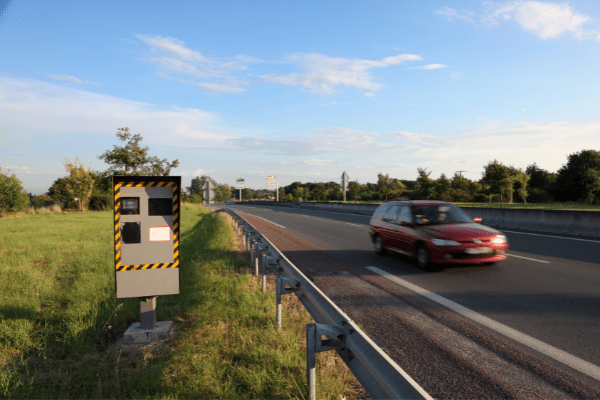Changes to the way speed cameras work in Flanders and Wallonia will increase the likelihood of receiving a ticket when cars pass them above the limit, according to De Standaard.
In Flanders, two different sections of road with speed traps will now be constantly active, rather than only half of the time; many speed cameras in Wallonia will now flash after a driver breaks the limit outside the margin of technical error, rather than when they pass at ten kilometres per hour over the posted limit.
The margin of technical error is usually 6 km/h for speeds below 100 km/h, and 6 percent for speeds above that, meaning a driver doing 85 km/h in a 80 zone be unlikely to receive a ticket.
Belgium’s Minister of Justice Vincent Van Quickenborne (Open VLD) is making good on promises to crack down on speeding by changing the way in which speed traps operate.
“The current situation – where the government sets a limit but for practical reasons does not enforce it – is inexplicable with a view to increasing road safety,” Tom Brijs, Professor of Traffic Safety at Hasselt University, told De Standaard.
“70 km/h should be 70 km/h.”
Brijs believes that the change could see up to five times the number of speeding tickets issued but predicts that this will be a short-term effect.
“In the beginning, many people will be surprised and get caught. Then they will adapt and the average speed will drop. And that is a big plus for road safety.”
Related News
- More than 5,500 people took part in the citizens' consultation on road safety
- Over 26,000 fines issued after speed limit reduction on Brussels Ring Road
In the past, speeding in an area with control checks didn’t always result in a ticket or fine in order to avoid an unmanageable workload for police and prosecutors.
In Wallonia, different “tolerance margins” were applied, meaning that in an area with a speed limit of 120 km/h, drivers would only be fined if they went over 141 km/h. These margins varied from region to region.
In Flanders, the controls would only be operational about half of the time – activated for one week, turned off the next.
Traffic experts have criticised this way of working, saying it’s responsible for the lax attitudes towards speed limits displayed by many Belgians, especially in comparison with other Europeans, according to several studies.
Some of those experts, such as Professor Emeritus of Traffic Engineering Willy Miermans of Hasselt University, even accused the government of “encouraging speeding.”
But at seven different places in Belgium, a zero-tolerance policy now applies.
“In this way, we increase the chance of being caught and we can reduce the number of traffic deaths,” Van Quickenborne said.
A spokesperson for his office said that the next steps will be to apply these changes more broadly: “Decreasing the tolerance margin in the whole of Wallonia and making all section controls in Flanders permanently operational.”
Right now in Flanders, there are about 238 speed cameras spread over 135 locations.
More police officers are being hired in anticipation of the increased workload and a new office for traffic safety will be opened in cooperation with the central public prosecutor’s office.
Belgium’s road safety figures are worse than other European countries, with an average of 44 road deaths per million inhabitants. This figure is 31 in the Netherlands, 33 in Germany and 39 in France.
In 2019, 644 people died on Belgian roads.

